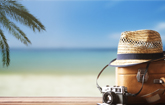SeaWorld Orlando's Animal Rescue Team Uses Special Orthopedic Equipment to Care for Once-stranded Pilot Whale
ORLANDO, Fla., Nov. 14, 2011 /PRNewswire/ -- SeaWorld Orlando is using a custom orthopedic brace to care for once-stranded pilot whale. The whale has scoliosis – or curvature of the spine – that prevents her from swimming normally.
(Photo: http://photos.prnewswire.com/prnh/20111114/FL05870 )
To treat the whale's curvature of the spine, SeaWorld Orlando animal experts and veterinarians worked with Orlando-based Jewett Orthopaedic Clinic to develop a custom-fitted brace that could be adjusted slowly over time, during daily physical therapy sessions. Vets and animal care experts hope the brace will help straighten the whale's spine and tail, allowing it to regain use of its tail and allowing it to swim normally.
This is the first time a custom-fitted orthopedic device of this kind has been used on a large whale.
According to Jon Peterson, a senior member of SeaWorld Orlando's animal rescue team, it's too soon to know if the brace will work but staff remain committed to doing anything possible to help care for the recuperating animal.
Story background: In early May, nearly two dozen pilot whales beached themselves in the lower Florida Keys. Two were healthy enough to be returned to native waters a few days later. On May 10th, the remaining five whales were transferred to the Marine Mammal Conservancy in Key Largo for more care. Unfortunately, three of the five survivors died, but two remaining whales – a young, female pilot whale named "Fredi" and an older female nicknamed "300" – were transported to SeaWorld Orlando's Cetacean Rehabilitation Facility where they continue to receive hands-on care. NOAA (National Oceanic and Atmospheric Administration) experts have deemed the animals unreleasable due to their age and need for advanced care.
During treatment, "300" developed severe scoliosis, or curvature of the spine, that prevents her from swimming normally. SeaWorld vets don't know the cause of the condition but felt treating the scoliosis was key to her overall health.
More innovation is used by SeaWorld when caring for rescued animals:
- SeaWorld animal experts were the first to bottle raise an orphaned manatee and have also developed "baby formulas" for rescued whales, sea lions and seals.
- Sometimes the innovation comes not in the equipment, but in the training. When a severely injured loggerhead sea turtle arrived at SeaWorld Orlando missing its lower jaw and suffering from starvation, park turtle experts taught the emaciated animal a new way to eat with only its upper jaw. The process took months, and the turtle gradually progressed from hand-feedings to independent eating skills.
- The innovative care also extends to the park's animal population. SeaWorld veterinarians went to extraordinary lengths to preserve the life of Dottie, one of the park's Atlantic bottle nose dolphins. Dottie went into kidney failure due to complications from kidney stones, but by working with "human" doctors from UC San Diego Medical Center, her life was saved through medical procedures never before performed on a dolphin including dialysis.
A global leader in animal care and conservation, SeaWorld Parks & Entertainment cares for more than 60,000 animals including 200 endangered or threatened species. This commitment extends to animals around the world: The company has contributed more than $50 million to conservation, wildlife rescue and environmental stewardship initiatives and has supported efforts on every continent, as well as operating its own well-respected wildlife rescue program. The SeaWorld Rescue Team is on call 24/7 to help animals in need.
SOURCE SeaWorld Orlando
WANT YOUR COMPANY'S NEWS FEATURED ON PRNEWSWIRE.COM?
Newsrooms &
Influencers
Digital Media
Outlets
Journalists
Opted In






Share this article